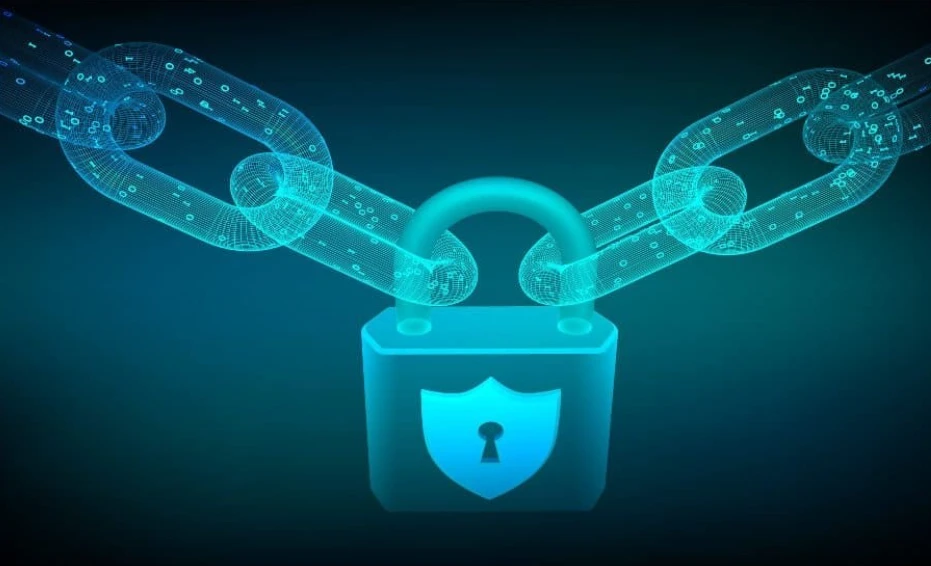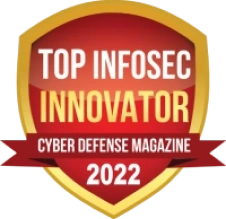What is MDR Security?
Managed Detection and Response, or MDR Security, is a cybersecurity service that combines advanced threat detection tools with expert-led response capabilities. Unlike traditional security solutions that rely on alerts and leave incident management to in-house teams, MDR is built to handle the full cycle of threat detection, investigation, and response—24 hours a day, 7 days a week. It’s an ideal solution for businesses that don’t have the internal resources or expertise to monitor, analyze, and react to cyber threats in real time.
At its core, MDR is a proactive approach to security. It doesn’t just wait for something to go wrong; it actively searches for signs of suspicious behavior, unauthorized access, or unusual activity across your endpoints, network, and cloud infrastructure. When a threat is detected, the MDR team investigates the alert to confirm whether it’s legitimate or a false positive. If the threat is real, they respond immediately—either containing the threat themselves or working directly with your internal Why MDR is Critical for Modern Cybersecurityize it.
What sets MDR apart from other security offerings is the human element. Artificial intelligence and automation certainly play a role, but the real power of MDR lies in the hands of the security analysts, threat hunters, and incident responders behind the scenes. These experts understand the context of the threat, evaluate how it fits into a broader attack pattern, and take appropriate action to limit damage. This level of insight and response simply isn’t Why MDR is Critical for Modern Cybersecurity
MDR Security is especially valuable for small and mid-sized organizations that may not have a dedicated security operations center (SOC) or for enterprises looking to extend their existing security team with additional expertise. It provides peace of mind, knowing that even when your team is offline, someone is Why MDR is Critical for Modern Cybersecurity
In today’s landscape—where threats evolve daily and attackers are becoming more sophisticated—having a managed detection and response service in place can be the difference between a minor scare and a major breach. It helps reduce dwell time, limits exposure, and improves your overall cyber resilience. For many businesses, Why MDR is Critical for Modern Cybersecurityrt investment; it’s a necessary step toward protecting their future.
Why MDR is Critical for Modern Cybersecurity
Cybersecurity today is no longer just about installing antivirus software or setting up firewalls. The threat landscape has changed dramatically. Attackers are smarter, faster, and more persistent than ever. Businesses are now dealing with ransomware, supply chain attacks, insider threats, and advanced persistent threats—all of which can bypass traditional defenses. That’s where MDR, or Managed Detection and Response, becomes essential.
MDR is critical for modern cybersecurity because it bridges the gap between detection and action. Most organizations receive thousands of security alerts each day. Sorting through them to identify real threats takes time, skill, and resources that many teams simply don’t have. MDR services provide not just the tools to detect these threats, but the human expertise to analyze and respond to them in real time. That means quicker decisions, faster containment, and reduced risk of damage.
Another reason MDR is vital today is the speed at which attacks occur. Many breaches happen in minutes, but take weeks—or even months—to discover. The longer a threat remains undetected, the more damage it can cause. MDR helps reduce what’s known as “dwell time”—the amount of time a threat remains in your environment before it's addressed. By having a dedicated team watching your systems 24/7, you minimize the window of opportunity for attackers.
MDR also helps companies stay ahead of compliance requirements and industry regulations. With cybersecurity frameworks becoming more demanding, it’s important to show that your organization is taking proactive steps to secure its environment. MDR providers often supply detailed reporting and logs that can help demonstrate due diligence during audits or investigations.
For businesses operating in hybrid or cloud-based environments, MDR adds a layer of visibility that many internal IT teams lack. Traditional tools may struggle to monitor everything across endpoints, servers, and remote work setups. MDR fills those gaps, providing a unified view of your threat landscape and ensuring no blind spots are left unprotected.
Ultimately, MDR is not just a luxury for large enterprises. It’s a necessary part of a modern cybersecurity strategy for businesses of all sizes. Whether you’re a growing startup or an established organization, having MDR in place means you’re not facing today’s threats alone. You’ve got experts in your corner, ready to detect, analyze, and stop threats before they can harm your business.
Key Features of an Effective MDR Solution
Not all MDR (Managed Detection and Response) solutions are created equal. While many providers offer similar-sounding services, the effectiveness of an MDR solution depends on a combination of technology, expertise, and execution. If you're evaluating MDR vendors, it's important to understand the key features that truly make a difference when it comes to protecting your organization.
First and foremost, a strong MDR solution offers 24/7 threat monitoring and response. Cyber threats don’t operate on a schedule, and neither should your security. Around-the-clock visibility ensures that potential attacks are detected and addressed no matter when they happen—whether it's the middle of the night, a holiday, or over the weekend. This constant vigilance dramatically reduces response time and limits the damage a threat can cause.
Another essential feature is advanced threat detection using behavioral analysis and threat intelligence. Instead of relying only on known malware signatures, effective MDR platforms detect unusual activity and indicators of compromise based on how users, files, or systems behave. This makes it possible to catch zero-day threats and advanced persistent threats (APTs) that might otherwise go unnoticed.
Equally important is the presence of a human-led response team. While automation and machine learning are valuable tools, real-world attacks require expert interpretation and decision-making. A high-quality MDR service gives you access to skilled security analysts, threat hunters, and incident responders who can investigate suspicious activity, determine the level of risk, and take action when needed. This human element is what sets MDR apart from automated alerting tools.
Comprehensive coverage across your entire environment is also key. An MDR solution should monitor endpoints, servers, cloud workloads, and network activity. With more organizations operating in hybrid or remote environments, it’s critical that the MDR platform integrates with existing security tools and provides visibility into all layers of your infrastructure.
An effective MDR provider should also offer clear reporting and communication. When a threat is detected and remediated, you need to know what happened, how it was handled, and what steps were taken. Regular reports, incident summaries, and access to dashboards help keep your internal team informed and support compliance needs.
Finally, scalability and customization matter. The best MDR services adapt to the size and needs of your business. Whether you're a small IT team or part of a large enterprise security operation, a good MDR solution should be flexible enough to grow with you—and evolve as your threat landscape changes.
In short, an effective MDR solution combines smart technology, real-time monitoring, skilled experts, and actionable insight. It’s not just about detecting threats—it’s about having the right people and processes in place to stop them before they become breaches.
MDR vs Traditional Security Solutions
When comparing MDR (Managed Detection and Response) with traditional security solutions, the differences go far beyond just tools and technology—they represent two fundamentally different approaches to defending against cyber threats.
Traditional security solutions are often reactive in nature. These include antivirus software, firewalls, intrusion detection systems (IDS),and other tools that rely on signatures or known patterns to detect threats. While these tools can catch common attacks, they struggle with modern threats that evolve quickly or use advanced evasion techniques. On their own, they also depend heavily on in-house IT teams to monitor alerts, analyze incidents, and take action when something goes wrong.
That’s where MDR changes the game. Instead of just generating alerts and leaving your team to sort through them, MDR combines advanced threat detection with an expert team that actively investigates and responds to those threats on your behalf. It shifts the focus from prevention-only to detection and response—something most traditional setups can’t provide without a fully staffed security operations center (SOC).
Another key difference lies in response time. Traditional tools may detect a potential issue, but without trained analysts to review and respond, that alert might go unnoticed for hours—or even days. With MDR, that gap is closed. Incidents are reviewed in real-time by cybersecurity professionals who know how to recognize patterns, confirm threats, and take action quickly to contain them.
Traditional security also tends to be siloed. You might have one tool for endpoint protection, another for network monitoring, and yet another for email security. These tools often don’t communicate well with each other, which can leave blind spots. MDR solutions, on the other hand, are designed to integrate across environments—pulling in data from endpoints, cloud services, networks, and beyond to provide a unified picture of your threat landscape.
Perhaps most importantly, MDR provides access to threat hunting and forensic capabilities that are usually out of reach for small and mid-sized businesses. While traditional solutions rely on automation and alert rules, MDR includes human analysts who proactively look for hidden threats and suspicious behaviors—even when there’s no alert triggered. This proactive approach makes a huge difference when it comes to identifying and stopping stealthy or targeted attacks.
How to Choose the Right MDR Provider
Choosing the right MDR (Managed Detection and Response) provider isn’t just about picking a vendor with flashy tools or big promises—it’s about finding a trusted partner who can truly protect your business from the ever-growing wave of cyber threats. With so many options on the market, it’s important to know what to look for and how to separate the signal from the noise.
Start by looking at 24/7 monitoring and response capabilities. A strong MDR provider should offer around-the-clock threat detection, investigation, and action. Cyberattacks don’t follow a 9-to-5 schedule, so your provider shouldn’t either. Confirm that their team is on duty at all hours and is capable of responding to threats in real time—not just sending alerts for your team to handle later.
Next, consider the human expertise behind the service. The best MDR solutions combine advanced technology with experienced security professionals. Ask about the size and skillset of their security operations team. Do they have certified analysts, threat hunters, and incident responders? Are they actively involved in stopping threats, or are they simply forwarding alerts? The depth of their expertise can make all the difference in a high-pressure situation.
Visibility and coverage are also critical. A good MDR provider should monitor your entire environment—including endpoints, cloud infrastructure, networks, and remote devices. They should be able to integrate with your existing tools or provide a platform that consolidates everything into a single view. If there are gaps in visibility, attackers can exploit them.
Customization and scalability matter, too. Your business is unique, and your MDR provider should adapt to your needs—not the other way around. Whether you’re a growing small business or a large enterprise, the provider should be able to scale services accordingly. Ask about onboarding, support, and how they tailor their detection rules and response workflows to match your environment.
Transparency is another big factor. The right provider won’t keep you in the dark. They’ll offer clear reporting, timely communication during incidents, and insights into what happened, how they handled it, and what you should do next. You should never be left wondering what your provider is doing behind the scenes.
Finally, evaluate response times and SLAs (Service Level Agreements). How quickly do they investigate alerts? How fast can they contain a threat? Clear expectations around response time are essential—because in cybersecurity, every second counts.
Choosing the right MDR provider isn’t just a technical decision—it’s a business-critical one. Look for a partner you trust, with the tools, people, and processes to protect your organization today and into the future.






